Show messages:
1-14
15-24
From: bemfarmer
After many difficulties, I finally made a version using some htm code, which may be 10% faster.
It is not much of a speed up. It does show the ongoing point generation, and leaves the start point.
Some code was separated. Some code was moved to htm script.
I'm going to work on a helix script now.
- Brian
Attachments:
 CCC02SlightlyFaster.7z
CCC02SlightlyFaster.7z
From: Hamish Mead (HAIRYKIWI)
Hi Karsten,
Thanks for your script - and to Brian too for giving it a speed tweak.
The math of your script looks really interesting. Unfortunately, I don't have enough time right now to get back up to speed on matrices and work my way through your code. If you think the Gaussian elimination method for multiple linear equations would give a significant speed advantage over the Cramer method - and I can see how it might - then the following page offers a ready to use javascript function and may be worth a look:
http://martin-thoma.com/solving-linear-equations-with-gaussian-elimination/
When I ran your script run on the output from my NACA airfoil generating script, it looks very close to what Rhino's own curvature analysis was giving, (I originally started developing my script in RhinoPython). Sorry I don't have consistent screen captures of identical airfoil series to show from MoI and Rhino, but you get the idea:



Cheers,
Hamish
Image Attachments:
 karstens_curvature_analysis_MoI43012-001.PNG
karstens_curvature_analysis_MoI43012-001.PNG
 karstens_curvature_analysis_MoI43012-002.PNG
karstens_curvature_analysis_MoI43012-002.PNG
 rhino_curvature_analysis_rhino43012A-001a.PNG
rhino_curvature_analysis_rhino43012A-001a.PNG
From: Karsten (KMRQUS)
Hi Hamish,
Thank You for the interessting link and I am glad to here, that the script is interessting for you.
yes, I think that a gaussian method could be faster, also for this small matricies. But, I have some Problems at the Moment: Frist - Time(as we all;-). The second enlarge the first Problem. The script has a serious design error, that kills also the performance. The function for calculating the centerpoints (csp) has 3 points as Parameters. So every call, biscectional planes were calculated - for the next call the second plane of the previous calculation is the first of the actual calculation. So I have a lot of redundant plane calcs. To improve the Performance a lot of changes have to be done.
Kind regards
Karsten
From: Frenchy Pilou (PILOU)
@ Karsten From the other thread! (where was the "ccc" );)
and this mysterious line (for me at first view)
<< The script without coloring and the node is in the extensions under infos. Insert the node, connect a curve to it and the out to an output. Press run - that's it.
A sort of miracle! :)

I have just a doubt in what folder put the ccc.js and ccc.html (so i put them both commands and nodes folders ! )
despit of that seems that's is working like a charm! :)
and damned I must translate an another node! :)
Edit: In fact a lot of !!! (all extentions' nodes that i have missed! Not only the "infos" but all the rest! :D
Here only the Infos/ "Curvature" French Translation is made!
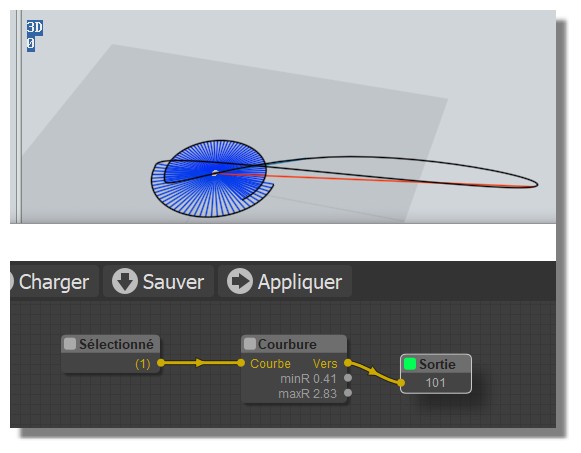
PS That will be a task to find what was the start curve who give this last Blue/Red colorized drawing! ;)
In fact easy if you can zoom ! ;)
Just a question : why the curve selected dont stay drawn during the application of the Infos node ?
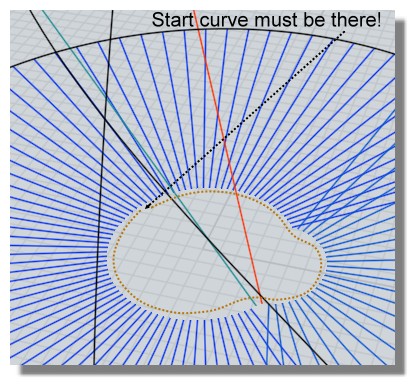
And does it normal that a simple circle gives an "open result" ? (same for the ellipse of the first image of this post)
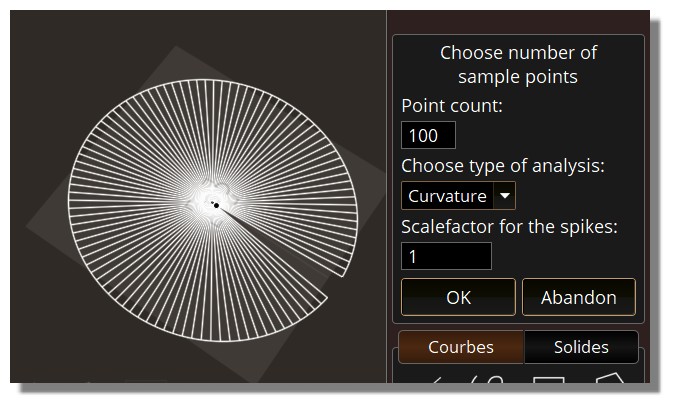
An hard day comes with all that to translate! :)
From: Karsten (KMRQUS)
Hello Pilou,
the problem of the open analysis curve for closed curves is caused by the patharray factory. The script works with a startpoint of the curve, arrays it to the curve and calculates the center of an theoretical arc for 3 following points. For a closed curve the arrayfactory don't calculate the last point, because it's the same as the start point. It's possible to improve that, but for the analysis it has not an effect, because the start and end point would need a previous point and following point. I solved that with a lagrange interpolation. The old script don't calculates start and endpoint. Ccc has to be placed in the command folder. It is complete independent from the node stuff. It's older than the elephant. Please play with the number of sample points and rhe scale factor.
Have a nice day
Karsten
From: Karsten (KMRQUS)
p. s. If you want to see also your curve in the nodeeditor while running a curvature analysis you can clone it first and give one clone to a second output node.
From: Frenchy Pilou (PILOU)
Thx for all these infos!
It's not precisely for me but for French people who will ask me that! :)
About the double curve by clone : very tricky simple!
I'm sorry I didn't find it all by myself!
Have happy Christmas...and coding!
See you the next year!
From: Frenchy Pilou (PILOU)
What is CCC ? Construction Curvature Calculation ?
Seems there is something! Like there is no title appropriated?
In English I have 2 Lines : (and not Select Curve(s) to Analyse! )
Choose Number
of Sample Points


Result!
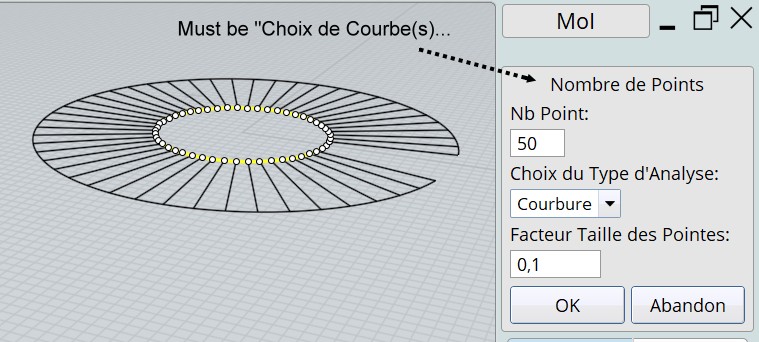
From: Karsten (KMRQUS)
I saw a film, there was some saying : Give me names of wild animals! Answer: Evil butterfly!
My first mind was calculate curves curvature, but it's to long so CCC, but I can't speak french so it's up to you how you will translate it. The right name in english is comp curve, I think. I read also porcupine analysis, but I think it's for surfaces and also a word used by Dassault. I'm not shure if they can english really. Some other naming in CATIA was raising my doubts in the past;-) Anyway, In french most of the things sounds better and more graceful.
Have a nice day
Karsten
From: Frenchy Pilou (PILOU)
No, my question was not about some names of things (except CCC) but just why that is writed inside the code is not shown on the panel !
Aespecially on the title!
I have offseted the text lines on the Nopad++ for have the right thing! :)
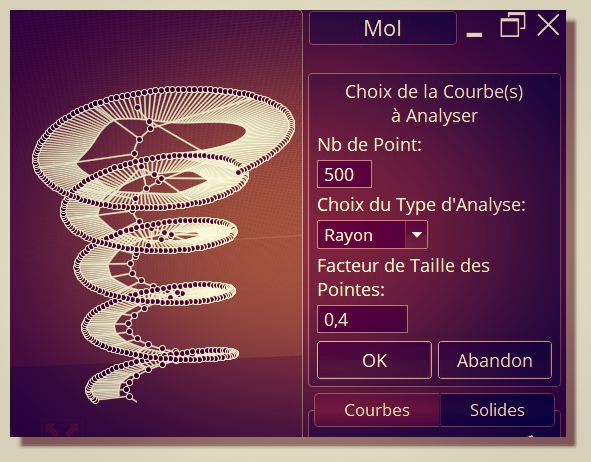
Show messages:
1-14
15-24
![]() CCC02SlightlyFaster.7z
CCC02SlightlyFaster.7z![]() karstens_curvature_analysis_MoI43012-001.PNG
karstens_curvature_analysis_MoI43012-001.PNG
![]() karstens_curvature_analysis_MoI43012-002.PNG
karstens_curvature_analysis_MoI43012-002.PNG
![]() rhino_curvature_analysis_rhino43012A-001a.PNG
rhino_curvature_analysis_rhino43012A-001a.PNG







